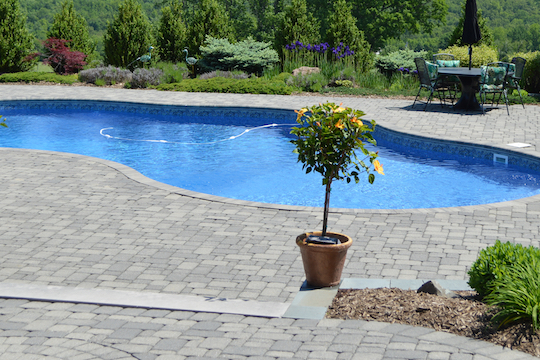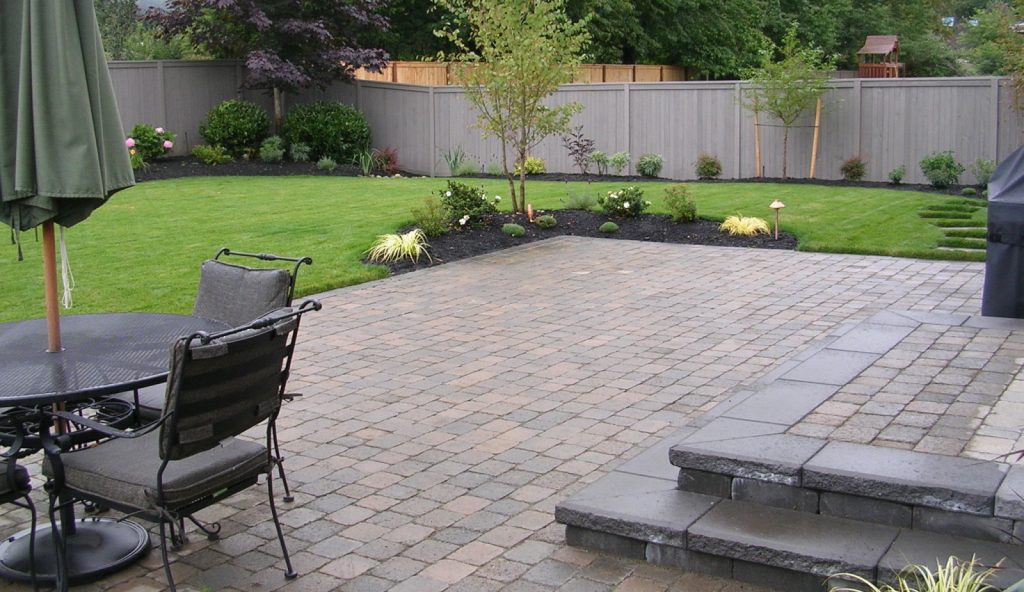The added expense of the surface material used around a pool should be regarded as a barrier to problems – not the least of which are slip-and-fall accidents.
A pool in a backyard is what defines a dream home for many. Particularly in warm climate markets, the pool can be a must-have for homebuyers.
But just as important as the pool is the area surrounding it. The hardscape surface material matters, aesthetically, in framing the pool and providing jumping-off points. The use of brick pavers, concrete, flagstones or wood decking provides a place for water to splash without muddying turf grass areas.
And that decorative hardscaping allows a place where occupants can enjoy soaking up sunshine. But safety is also a critical component of that hardscape.
In-ground pools – despite their image of luxury, providing halcyon summer days and elegant nights – are also associated with horrible accidents. The National Safety Council reports that in ten states (Alaska, Arizona, California, Florida, Hawaii, Montana, Nevada, Oregon, Utah and Washington) drowning is the number one cause of death to children under the age of 14.
In many cases, those deaths aren’t just from going underwater due to a lack of swimming skills. Some are also related to slip-and-fall accidents, where a child or an adult lost their footing or balance on the surrounding hardscape. An even surface is rarely the problem, but a slippery surface is. Consider how children naturally run while playing near a pool. Teenagers might “hot dog” it by running into a cannonball jump. And adults, with or without a cool cocktail in hand, can be playful around the water’s edge. If the area nearest the pool is slippery and the adult or child loses his or her footing and hits their head, injury or death can result – sometimes from drowning, sometimes from just the traumatic brain injury.
Pavers are generally considered the safest of materials to prevent tragic accidents. Yes, the very same pavers – or “paving stones” that an asphalt contractor utilizes on fancy estate driveways. This becomes even more so with the application of a matte sealant, which adds traction to the paver surface.
Surprisingly, these sealants used on pavers give surfaces a shinier luster. It is a safety feature that, surprisingly, also adds a certain elegance. Just as important, the treatment will preserve the pavers against the elements (rain, ultraviolet rays, freezing, etc.) longer than if left untreated.
Another advantage of pavers is that they are set in sand and thus flexible to seasonal temperature shifts and small seismic events. With a solid sheet of concrete large cracks develop that are both unsightly and can add a different kind of hazard, the trip-and-fall effect.
The permeability of the tiny spaces between individual paver bricks also allows rainwater to percolate into the earth instead of draining into the pool where dirt would also flow. All in all, pavers provide multiple advantages that justify a higher installation cost vis a vis concrete. When you’re ready, just Google “paving stone contractor” and make that phone call.


